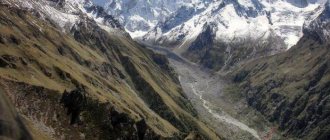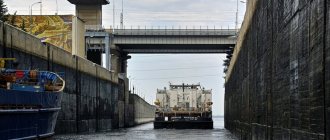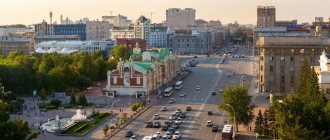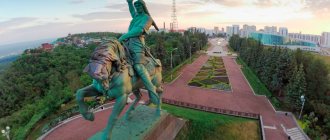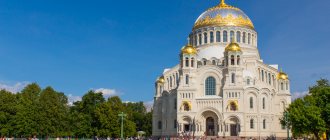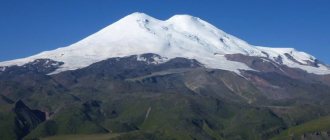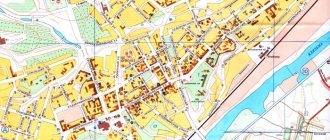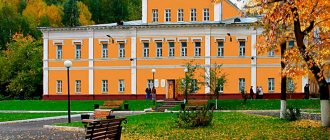Many tourists are considering a holiday within Russia in order not to waste time on obtaining a passport and visa, and also to save money. If necessary, you can buy a cheap plane ticket and go to Kabardino-Balkaria, pre-booking half board. In this republic you will be able to enjoy magnificent mountain scenery and get acquainted with other local attractions.
Mountain Elbrus
It is in Kabardino-Balkaria that the famous Mount Elbrus is located, which is the highest not only in Russia, but also in Europe. For the first time, a group led by one of the generals climbed to its summit in 1829. Now there are several routes along the mountain, along which many tourists pass.
Mountain Elbrus
Mount Elbrus was formed approximately a million years ago. This is a volcano that is at a stage of relative dormancy. There have been no eruptions for several thousand years, but it cannot be said that volcanic activity is completely completed. The highest point of the mountain is 5642 meters.
- Location: on the border with Karachay-Cherkessia.
- Ascent with a group: takes 10-11 days (depending on the route).
- Price: from 28,000 rubles.
Holidays in the region
Kabardino-Balkaria occupies a fairly small area on the map, but at the same time it is one of the most favorable regions of Russia for recreation and tourism.
In the foothills of Balkaria there are cold and hot mineral springs. Thanks to the healing properties of water and mud, many tourists come here every year. The resort business is well developed in the republic, and all kinds of boarding houses and health centers are ready to offer their services.
The region is a leading center for skiing and mountaineering. The number of people wishing to conquer the heights of Elbrus and other five-thousand-meter mountains (with peaks above 5 thousand meters above sea level) is constantly growing. Kabardino-Balkaria offers sports recreation for both professionals and amateurs.
The most popular routes are the Elbrus and Cheget mountains, which are part of the Elbrus region. The ski slopes on Cheget are some of the most difficult to navigate, and avalanches occur quite often.
For the convenience of vacationers, there are cable cars and ski lifts with breathtaking views of wildlife. You can get the necessary sports equipment and equipment, as well as use the services of an instructor, at one of the many tourist centers.
Downhill trails are leveled and rolled using special equipment, and for extreme sports enthusiasts there are undeveloped slopes. It is here that one of the most spectacular annual events of the republic is held - freeride competitions.
In addition to sports recreation, excursion tours to mountain gorges, protected forests, waterfalls and lakes are popular among tourists. Mountain caves are also interesting, many of which have not yet been explored. In some of them you can find underground lakes, stalactites and traces of ancient people.
In the foothills of Kabardino-Balkaria, winters are milder than in the flat areas, and summers are moderately comfortable. Snow and glaciers on the mountain tops do not melt even in summer, while in the steppes it is hot and dry.
The summer ski season lasts until about mid-July, and sometimes longer. Therefore, tourists can be found here at any time of the year. Although a summer vacation will cost an order of magnitude cheaper than the winter tourist season.
Cathedral Mosque of Nalchik
An architectural landmark of the region is a modern mosque in Nalchik, built according to the design of the famous young architect A. Asanov. Its official opening took place in 2004. Before this, the Yunost cinema was located on the site of this building.
Cathedral Mosque of Nalchik
The building is a symmetrical monoblock. Near the entrance there are minarets 30 meters high. On the first level the building has the shape of a square, and on the second - an octagon. There are prayer rooms inside. The largest of them can accommodate up to 700 people.
- Address: Nalchik, Shogentsukov Avenue, 133.
- Working days: Monday to Friday.
- Visiting hours: from 9:00 to 18:00.
Where is the city?
The length of the territory of the Kabardino-Balkaria in the direction from south to north is 100 km, from east to west - 175 km. The republic borders on the east/southeast with Ossetia-Alania, and on the south it neighbors Borjomi and Georgia.
The urban district of Nalchik is located at an altitude of 512 m above sea level, geographical latitude 43 ° and longitude 36'.
From a geomorphological point of view, the territory of the capital is equated to an area that passes from low foothills to a slightly sloping plain.
Aushiger thermal springs
You can spend time usefully near the village of Aushiger. Here there is water saturated with all kinds of trace elements and minerals. With its help, various diseases of the skin, gastrointestinal tract, blood vessels and many others are treated.
Aushiger thermal springs
Now this place is a full-fledged resort with well-developed infrastructure. A large swimming pool was built directly next to the hot spring. It mixes river and medicinal water to maintain a safe temperature.
- Location: in the Chereksky district near the village of Aushiger.
- How to get there: by minibus or private vehicle.
- Hotel price: cost of a double room – from 2000 rubles per day.
Cathedral of Mary Magdalene
On the territory of Nalchik there is the largest Orthodox cathedral in all of Kabardino-Balkaria. It was built with donations from believers. The main altar was consecrated by Patriarch Kirill himself. He also donated the image of Seraphim of Sarov and a painted Easter egg to the modern cathedral.
Cathedral of Mary Magdalene
The temple occupies an area of 800 square meters. When laying the foundation, a capsule was laid with an appeal to descendants. The building can accommodate about 1000 people.
- Address: Nalchik, Malbakhova street, 23.
- Divine services: morning – at 8:00, evening – 16:00.
- admission .
Science and education[ | ]
Main article: List of higher educational institutions in Kabardino-Balkaria
- Kabardino-Balkarian State Agrarian University named after V. M. Kokov
- Kabardino-Balkarian State University named after. Kh. M. Berbekova
- Kabardino-Balkarian Institute of Business
- Kabardino-Balkarian branch of the Moscow Institute of Integrated Security
- Nalchik Institute of Cooperation (branch) of the Autonomous Non-Profit Organization Belgorod University of Cooperation, Economics and Law
- North Caucasus State Institute of Arts
- North Caucasus Institute for Advanced Training of Employees of the Ministry of Internal Affairs of Russia (branch) of the state government Krasnodar University of the Ministry of Internal Affairs of the Russian Federation
- Modern Humanitarian Academy - Nalchik branch
- Armavir Linguistic Social Institute - Branch in Nalchik
- Federal State Budgetary Scientific Institution Kabardino-Balkarian Scientific Center of the Russian Academy of Sciences.
Blue Lakes
Of the natural attractions, a group consisting of 5 karst lakes deserves a visit. The entire complex is conventionally divided into lower and upper reservoirs. The water in the lakes is crystal clear. At a depth of more than 20 meters, the bottom is quite clearly visible.
Blue Lakes
The largest in area, but at the same time the smallest, is Lake Superior, which is fed by precipitation. Its water level varies slightly throughout the year.
- Location: in Chereksky district at a distance of 30 km from Nalchik.
- How to get there: The A-154 motorway is nearby.
- Visit: free.
Sights of the CBD
The Kabardino-Balkarian Republic is located in the south of our vast country, in terms of area it is almost the smallest subject of the Russian Federation, but on its territory it has a large number of places that are worth visiting and which are interesting to see.
The most important asset of the republic is the two-headed, handsome extinct volcano Elbrus. In clear weather, it can be observed from afar from different places in the KBR, Stavropol region, Karachay-Cherkessia and even Georgia. Elbrus is the highest point in Europe and Russia, its height is 5652 m.
Due to the well-developed transport and related infrastructure, Elbrus and the surrounding areas are very popular in recreational, sports, tourism and mountaineering terms. Despite the comparative ease of climbing to the peaks of Elbrus, according to various estimates, from fifteen to twenty people die on it every year, which accounts for about 80% of all accidents in the Elbrus region.
The next attraction is the blue lakes. This is a group of 5 karst lakes in the Chereksky region of Kabardino-Balkaria. They are located approximately 30 km (as the crow flies) south of Nalchik in the valley of the Cherek-Balkarsky River. The most famous is the lower blue lake, which in fact is the deepest and most unexplored karst lake in the world. Its proven depth is 279 m and it is located at an altitude of 809 meters above sea level.
The water is crystal clear, transparent, visibility ranges from 20 to 50 m. The color of the water is variable. In clear weather it is pale blue, and in other weather conditions it changes to azure (due to the hydrogen sulfide content). The water surface of the lake is calm, it seems to have frozen, frozen in its mysterious, enigmatic beauty.
The group of Chegem waterfalls is formed by 3 waterfalls. If you move along the Chegem Gorge to the south, then the first, 2 km south of the village of Nizhny Chegem, will be the Small Chegem Waterfall, or Adai-Su (Maiden's Spit). It is located on a tributary of the Chegem - the river of the same name, which flows into the Chegem from the right. The waterfall is located about 200 m from the road and looks like a huge stone trench created by nature - the waters of the Adaisu River flow down it. This waterfall is considered the most powerful of the entire group, and its height is about 30 m.
Further, south of the village of Khushto-Syrt, the Chegem Gorge begins (Su-Auzu - “water from the throat”) - the width of the gorge at its narrowest point decreases to 25 meters. Within this gorge are the Great Chegem Waterfalls. The first waterfall to open to the traveler is the Sakal-Tup River, the right tributary of the Chegem River.
Finally, about half a kilometer further south, the Main Chegem Waterfall opens on the Kayaarty River, another right tributary of the Chegem River. It is considered the most unusual of the group of Chegem waterfalls, since it actually represents a whole group of waterfalls. Some of the water falls into Chegem in the form of small cascades from a height of 50-60 m, the other oozes from rock crevices in the upper part of the wall. Falling from the ledges, the water breaks and turns into water dust, which, reflected in the rays of the sun, creates a sparkling rainbow picture.
In winter, the waterfalls freeze and form a grandiose ice cascade.
Not very famous, but very popular among those who know about it. It is located right next to Elbrus, on the northern side. Djily-Su is a tract with a warm Narzan spring of the same name, which gave its name to the entire area.
This place has been known for many centuries; since ancient times, sick people have traveled here on foot and on horseback along mountain paths to take narzan baths and drink healing water.
In this place, Narzan springs gush out from underground in dozens of places, and the view that surrounds you is simply stunning.
The Djily-Su tract has long attracted esotericists. They explore these places, studying the history of ancient civilizations.
According to legend, it was here that the Slavic paradise - Iriy - was located. Scientists claim that the Elbrus Mountains are an ancient temple complex, about 5 thousand years old. At that time, the ancient Russian people Ruskolan lived in these places. And the discovered elongated skulls indicate that the so-called “children of the gods,” priests, lived here.
Members of research expeditions discovered unexpected finds from World War II. This is exactly the place where Hitler planned, with trained mediums, to make contact with the Hierarchs of the Earth. He wanted confirmation whether he really was the Messiah.
National Museum of the Kabardino-Balkarian Republic
In Nalchik you can visit the local museum, which will allow you to get acquainted with the national history of the republic. It was established in 1921. Since then, its exhibition has expanded significantly. The historical part of the collection is represented by various archaeological finds.
National Museum of the Kabardino-Balkarian Republic
In one of the halls there is a relief map of the region and small samples of minerals that the territory of Kabardino-Balkaria is rich in. The exhibition area occupies 1000 square meters.
- Address: Nalchik, Gorky street, 62.
- Opening hours: the institution is closed only on Monday, on other days it is open from 10:00 to 17:00.
- Ticket price: 50 rubles.
Sights of Kabardino-Balkaria
This park dates back to the 19th century, when it was decided in 1847 to establish an orchard for the recreation of officers of the Nalchik fortress. And the garden was founded at the Nalchik fortification, and fruit trees were brought into it from the Crimea and Georgia - apricots, apple trees, pears, plums, grapes. The trees took well, and soon an amazing garden-forest with fruit trees and linden alleys arose. In 1865, the garden was presented to Prince Atazhukin. The prince did not care much about the safety of the garden, and as a result it was neglected. In 1920, it was decided to improve the garden and make it a resting place for the townspeople, as a result of which the executive committee decided to add flower beds and walking alleys to the park.
1921 is the year of foundation of the National Museum of the Kabardino-Balkarian Republic - the center of all local history works of the republic. The museum has its own library, and local history and local history clubs operate on the basis of the museum. Excursion texts are prepared specifically for certain categories of visitors.
From time immemorial, Kabardian horses were considered one of the best; they were purchased for cavalry in Tsarist Russia. In Soviet times, horse breeding was not forgotten, and in 1931 the Presidium of the regional executive committee decided to build a permanent hippodrome in Nalchik. The decision was delayed for several years, but in 1939 the racecourse was built. Problems began very soon, when during the Great Patriotic War huge damage was caused to the horse population. It was possible to restore it to the level it was in the pre-war years only in the early 1960s. And then the hippodrome finally came to life to the fullest, the racing business began to improve, and everyone remembered how good Kabardian horses once were.
The appearance of the Friendship Memorial Arch is directly connected with the name of the President of the Kabarino-Balkar Republic, Arsen Kanokov, since it was built at his personal expense. The opening was timed to coincide with the celebration of the 450th anniversary of the union of Kabarda and Russia. Muzarib Bzhakhov is the author of the arch project. Initially, the idea was to decorate the arch with bas-reliefs depicting scenes from Adyghe history and the Nart epic.
Lake Syltran-Kol is one of the most beautiful high-mountain lakes in the Caucasus. It is located at an altitude of 3000 meters above sea level, and its area is about 10 hectares. Translated from Turkic, the name of the reservoir sounds like “beautiful lake”. Lake Syltran-Kol is located in the pit of a rock-talus circus. To get to it, you need to take a route to two equal mountain peaks - Syltran and Mukal, which are located at an altitude of 3900 meters above sea level, because it is between them that the lake is located.
Cheget is one of the highest mountains in the Caucasus. Its height reaches about 3770 meters. It is a popular tourism destination among travelers. From the mountain you can enjoy the view of the highest peak in Europe – Elbrus. Another feature of Mount Cheget is the second line of the cable car, which passes through an area where there is snow that does not melt throughout the year. There are three lines of the cable car in total. The height of the first reaches about 1600 meters. It is one of the most popular for tourists who come to Cheget to enjoy the view of Elbrus.
The "Maiden's Braids" waterfall is located on rocks called "Ram's foreheads" near the Terskol peak at an altitude of about 3,100 meters above sea level. You can see the waterfall up close by going up to it along one of several routes. An easier way is the road along the southern trails of Terskol Peak. For those who prefer extreme sports, there is another way - the tractor road to the Terskol gorge. The waterfall itself is 30 meters high, and the width at the very bottom is about 15 meters. It is fed by the melting Gara-Bashi glacier.
Lake Donguz Orun-Kol is surrounded by two peaks - Donguz-orun-bashi and Nakra-tau, whose heights are 4450 and 4228 meters, respectively. The lake is located slightly lower than the surrounding mountains at an altitude of about 3100 meters. The name of the lake translates as “next to the pig pen.” It is located on the border between the Russian Federation and Georgia. A special feature of the reservoir is its unusual color, which the lake received thanks to glaciers. The thing is that, along with water from melting glaciers, minerals from the mountains enter the lake, which color the lake in three colors. The reservoir is flowing, on one side the Donguzorun River and the large Medvezhy Stream flow into it, and the Donguz-Orun Baksan River flows out.
Glade Azau is the highest point of the Elbrus region, which is inhabited by people. It is located at an altitude of 2300 meters above sea level near the village of Terskol. The glade is directly adjacent to the foot of Elbrus. Azu is a village that mainly consists of various hotels and tourist centers. All the places where a traveler can stay in the clearing are built along its perimeter, forming a small square inside; between the hotels there are many cafes and small restaurants serving Caucasian and European cuisine.
This mountain, after Elbrus, is the second most popular among climbers. This is because it is also quite high - 4454 meters above sea level.
There are several ways to get to the mountain: by cable car or on foot. Tourists who choose the first method can use the Cheget cable car at the final point, where small cafes are located. The second and more difficult path, which takes several hours, is from the Cheget meadow along a path already crowded with tourists. However, it is better to hit the road with an experienced guide, otherwise there is a chance of getting lost in the mountains.
The monument to the first conquerors of the highest peak in Europe, Mount Elbrus, welcomes everyone who decides to enjoy the view of the mountain and follow the path of these pioneers. The monument stands on a bridge that runs across the fast mountain river Baskan. The monument to Killar Khashirov and Akhiya Sottaev was erected in the 70s of the last century; since then it has been restored, but has retained its original appearance to this day. The conquest of Elbrus took place in 1829; the original expedition consisted of 20 people, but only Killar Khashirov managed to climb to the top.
The river originates from the glaciers of the highest mountain in Europe - Elbrus. The river is one of the longest in the republic, but it is also highly polluted due to the nearby industrial plant. In the vicinity of the river there are mountaineering camps, the Elbrus National Park, and an observatory. According to some sources, the river received its name in honor of Prince Bakan, who lived in the Caucasus. After the brutal murder of the prince and his family, they were buried near the river, which was then named after him. The river is popular among rafting enthusiasts. This is due to the fact that in its upper reaches Baskan descends 65–70 meters for every kilometer of the route. With each subsequent kilometer the river slows down.
One of the most impressive natural monuments in the Elbrus region. However, it is located in a place difficult to access for tourists, the Djily-Su tract on the territory of Kabardino-Balkaria. There are no communications or settlements with hotels and tourist centers. The only people you can meet here are climbers who are going to conquer Elbrus and shepherds grazing their flocks. In total, there are three waterfalls in this place, which appeared thanks to protruding rocks at the formation of the Malka River. However, "Sultan" is the tallest and fastest of them.
The lakes are located in the Zolsky region of Kabardino-Balkaria and represent two reservoirs: Shadhurey-First or “big lake” and Shadhurey-Second or “Small lake”. Before the beginning of the 20th century, there were two lakes, but for unknown reasons, one of them dried up, forming a pit. The lakes were formed as a result of the collapse of the earth. However, local residents found another reason; according to them, there were once camps of three brothers here, and at one point they were swallowed up by the earth, forming three lakes. Therefore, local residents were afraid to approach the lakes for a long time.
The Narzanov Valley is located on the border of the Kabardino-Balkarian Republic and the Stavropol Territory, just a few tens of kilometers from Kislovodsk. It is there that the valley of the Khasaut River is located, which is a tributary of the Malka. Descending into the river valley you can see the majestic Mount Elbrus. The Narzan Valley is surrounded on all sides by various landscapes and reliefs.
The Baksan Gorge is considered the most famous in the Central Kazkaz, leading to the foot of Elbrus. The gorge originates from the Skalisty and Pastbishchny ridges, in an area with sparse forests. The ridges pass through the villages of Lakshuty and Zhankhoteko. From this point on, nature takes on a new character. On one side you can see limestone steep walls of a white and yellow hue, on the other - a cliff to the Baksan River.
Cathedral of St. Nicholas the Wonderworker
The republic has a beautiful Orthodox church, which is located in the city of Prokhladny. In its place in 1823 a wooden church was erected, which burned down 50 years later. The new building was built of stone. In 1886 the consecration of the cathedral took place.
Cathedral of St. Nicholas the Wonderworker
During the Soviet period, the church operated for a long time, but in 1937 the building began to be used as a warehouse for storing grain crops. In 1942, the temple was reopened to believers.
- Address: Prokhladny, Stroitelnaya street, 141.
- Days of the week: daily.
- Divine services: in the morning - at 8:00, in the evening - at 16:00.
Customs
A clear difference between both Balkars and Kabardians from Russians is their incredible hospitality. They are able to invite someone whom they barely had time to meet. According to tradition, neither children nor the hostess sit at the table with the guest and men. They watch from the sidelines, waiting for the moment when their help may be needed. In cities this tradition is almost forgotten, but in villages it is firmly adhered to. You won’t be able to seat the hostess with you, so just thank her for her hospitality.
In the Caucasus, it is considered extremely impolite to interrupt your interlocutor, but interrupting a person older than you is simply impossible.
Mountaineering and hunting museum named after V. Vysotsky
In 1997, an interesting museum dedicated to V. Vysotsky began operating on the territory of Kabardino-Balkaria. It is located at an altitude of 1850 meters. Here in 1966, the famous film “Vertical” was filmed with the participation of the famous singer of the original song.
Mountaineering and hunting museum named after V. Vysotsky
The museum was founded by a resident of the republic, Khusein Zalikhanov. The building of the institution was erected from solid volcanic lava. The exhibition features numerous hunting trophies and items that once belonged to famous people.
- Address: Tyrnyauz district, Tegenekli village.
- Working days: daily.
- Visiting hours: from 10:00 to 18:00.
Cultural and historical recreation
Kabardino-Balkaria on the map of Russia looks like a large cluster of mountain ranges and massifs, which occupy more than 60% of the republic’s area. The most beautiful sights of the region are located in the mountains and foothills. But, in addition to natural beauties, there are many cultural and historical attractions, mostly concentrated in Nalchik.
- The National Museum of the Republic of Kabardino-Balkaria is located in the capital of the region (on Gorky Street) and consists of 10 halls. The entire local history collection of the republic is collected here, including natural, archaeological and ethnographic exhibits. Lectures are often held on the territory of the museum, there is a history club and a library.
- Restaurant Sosruko - one of the most recognizable architectural structures of the mid-20th century, depicted on many souvenirs and advertising brochures. The unusual building is made in the shape of the head of the hero of local legends - Sosruko. A helmet is placed on the head, and next to it is the hand of a hero holding a fiery torch. The restaurant is located in Nalchik, on Mount Bolshaya Kizilovka, at 640 meters above sea level. You can climb the mountain using a cable car. The helmet's observation deck offers a beautiful panoramic view of the surrounding area. The restaurant itself is not open, but the observation deck is open to the public.
- The City of the Dead is a cultural and historical monument near the village of El-Tyuby in the Chegem region. It is an open-air museum of burial structures. The earliest burials date back to the 10th century. Previously, it was believed that the sacred element of the earth should not be desecrated by the bodies of the dead, therefore, for their repose, special houses of the dead, keshenes, were built, which were like family crypts. The City of the Dead is included in the list of anomalous zones in our country, since at the end of the 20th century. Mysterious flashes of unknown origin were observed here.
- Arch of Friendship - is called “Forever with Russia” and was installed at the entrance to Nalchik in 2007. The memorial complex is made in a conservative style and is dedicated to the reunification of Kabarda and Balkaria with Russia. It has become one of the city's most recognizable landmarks.
- The Mountaineering and Hunting Museum of V. Vysotsky is actually of a local history and educational nature and includes hunting trophies, equipment of climbers from different years, information about the first conquerors of the peaks. The central place of the collection is given to materials related to the film “Vertical”, in which Vysotsky played the main role. The museum contains his personal belongings, songs and records, a gun and a tent from the filming. The museum is located in the Tyrnyauz region of the Elbrus region, in the village of Tegenekli, where in the middle of the 20th century. The film was being filmed. The unique building is built from volcanic rocks.
Valley of Narzans
In a picturesque place along the Khasaut River, 17 mineral springs come to the surface. The flow rate of the main ones is about 1 million liters per day. The area is surrounded on all sides by high ridges. From here you can see one of the main attractions - Elbrus.
Valley of Narzans
Tourists are attracted not only by springs with healing water. There is a very diverse vegetation here, and also quite rare species of animals. Now there is an asphalt road through the valley.
- Location: in the Zolsky district at a distance of 34 km from Kislovodsk.
- Visiting time: any time of the year.
- Cost: as part of an excursion group – from 1000 rubles.
What to bring as souvenirs
As a gift from Kabardino-Balkaria, both a bottle of healing water from mineral springs, which has a limited shelf life, and souvenir attributes symbolizing the Caucasus are suitable:
- Magnets, mugs, T-shirts, figurines with landscapes of mountains and lakes.
- Items made of natural sheep wool with traditional deer patterns.
- Wool carpets.
- Attributes of the life of the mountaineers - hats, daggers, horn cups.
- Details and decorations of national clothing created by the hands of local artisans.
- Wall horns of artiodactyl wild animals.
- Dishes made of black clay.
- A doll in national dress.
- Paintings by local artists with landscapes of Kabardino-Balkaria.
- Interior decorations made of felt, reeds and leather.
- Local cognac in crystal horns and daggers, which can only be bought at the market (officially discontinued).
It is not for nothing that Kabardino-Balkaria is considered the pearl of Russia. Despite such a small size on the map, in comparison with other regions, the republic is distinguished by its amazing natural beauty, variety of attractions and types of tourism.
The abundance of healing mineral springs located in ecologically clean areas makes it one of the most popular resort areas in the country.
Author: Anna Lalochkina
Article design: Vladimir the Great
Green Theater
In Nalchik, on the territory of the city park, there is an elegant amphitheater that blends well with the surrounding landscape. It looks especially impressive in the spring, when the trees around begin to bloom.
Green Theater
The modern theater, when compared with the previous facility, has increased significantly in size. It can accommodate up to 2,500 visitors. It is distinguished by high-quality acoustics.
- Address: Nalchik, Shogentsukov Avenue.
- Weekdays: Tickets can only be purchased on weekdays.
- Time: the ticket office is open from 9:00 to 18:00, lunch break is from 13:15 to 14:15.
Content
- 1 Geography 1.1 Climate
- 1.2 Ecosystem
- 1.3 Rivers
- 1.4 Lakes
- 1.5 Waterfalls
- 1.6 Five-thousander peaks
- 4.1 Sex and age composition
- 7.1 Industry
Restaurant "Bochka"
In the capital of Kabardino-Balkaria there is an unusual restaurant that is considered a local landmark. This is the largest wooden barrel-shaped structure on the planet. In the middle of the 20th century, there was a small mineral water store on the site of the current facility.
Restaurant "Bochka"
Now there is a two-story restaurant here, you can enter it from the end of the building. A small staircase approaches it. This establishment is popular among citizens and tourists.
- Address: Nalchik, Shogentsukov Avenue, 3.
- Working days: from Monday to Sunday.
- Visiting hours: from 11:00 to 23:00.
Administrative division
Kabardino-Balkaria appeared on the map of Russia in 1921 as an autonomous region, becoming a republic only in 1992. The capital of the republic is the resort city of Nalchik.
According to the administrative and legal structure, it is divided into 3 urban districts and 10 districts with rural settlements and towns:
| Municipality | Name | Settlements of the municipality |
| Urban district | Nalchik | 1) City of Nalchik; 2) 8 villages. |
| Baksan | 1) Baksan city; 2) the village of Dugulubgey. | |
| Chill | Prokhladny city | |
| Area | Elbrus | 1) the city of Tyrnyauz; 2) 6 settlements. |
| May | 1) City of May; 2) 4 settlements. | |
| Tersky | 1) Terek city; 2) 17 settlements. | |
| Prokhladnensky | 1) Prokhladny city; 2) 19 settlements. | |
| Chereksky | 1) Kashkhatau town; 2) 9 settlements. | |
| Baksansky | 1) Baksan city; 2) 13 settlements. | |
| Urvansky | 1) The city of Nartkala; 2) 11 settlements. | |
| Zolsky | 1) Urban settlement Zalukokoazhe; 2) 15 settlements. | |
| Chegemsky | 1) City of Chegem; 2) 9 settlements. | |
| Leskensky | 9 settlements. |
Monument to the “Heroes of the Elbrus Defense”
On the slope of Mount Elbrus there is a monument dedicated to the heroes of the defense of the Elbrus region. This monument was erected in 1987, timed to coincide with its grand opening on May 9. The monument is a structure consisting of seven aluminum steles. All of them are located on a two-meter base.
Monument to the “Heroes of the Elbrus Defense”
The steles reflect the names of 219 heroes of the USSR who died in the battles on Elbrus. The monument was previously located in a different place. It was moved in 2010 during the construction of the cable car.
- Location: on the slope of Mount Elbrus.
- Visit: 24 hours a day.
- Fee: no charge.
Lover's Tower
In one of the city parks of Nalchik you can visit the observation tower, which was erected in 1867. The structure resembles an ancient fortification. However, the building was originally built to create an observation point in the park. Large-scale reconstruction of the facility was carried out in 1961.
Lover's Tower
Now the tower is a popular attraction among tourists and local residents. Newlyweds often come here to take photographs on their wedding day.
- Object address: Nalchik City Park.
- Visiting hours: around the clock.
- admission .
Modern objects interesting to visit
Nalchik is a cozy, spacious city surrounded by greenery, the hallmark of which is Atazhukinsky Park, which occupies 173 hectares. Founded in 1847 as an orchard, it became the main recreation place for residents and guests of the city. Named in honor of its founder, the Kabardian prince Atazhukin, the park represents the well-deserved pride of the republic.
The park has luxurious flower beds, which are the constant concern of talented florists, a variety of attractions have been built for children and adults, and cafes with national and European cuisine have been opened.
Restaurant "Bochka"
One of the paths of Atazhukinsky Park will certainly lead to a unique structure - a huge barrel, inside of which there is a 2-story beer restaurant.
It is impossible to deny yourself the pleasure of taking a selfie in front of this truly unique structure, then going to an amazing gastronomic establishment to quench your thirst with a glass of fresh foamy drink and taste the taste of national dishes.
Restaurant "Sosruko"
This is a monumental object, without visiting which no acquaintance with Nalchik is complete. The architectural complex, erected on Mount Malaya Kizilovka, is a structure made in the form of the head and outstretched hand with a torch of an ethnic hero - the hero Sosruko.
The observation deck located in front of the restaurant offers a magnificent panoramic view of the area from a height of 600 m. The spectacle is literally mesmerizing.
Museums of Nalchik
Nalchik (the city is located in a region that is quickly gaining ratings in terms of tourist attendance) is of undoubted interest in terms of its historical development. You can get acquainted with the culture, way of life, traditions and customs of the peoples inhabiting the republic by visiting museums of republican significance.
The most popular facilities include the following institutions:
- State United Museum of the KBR (Gorky St., 62).
- House-Museum of Marko Vovchok (Dolinsk).
- Memorial Museum-Apartment of A. A. Shogentsukov (Gorky St., 35);
- Panorama Gallery (Shortanova St., 40).
- Art Center Madina Saralp (Lermontov St., 2-a).
- Police Museum (Moskovskaya St., 10, building 2).
Art Center Madina Saralp, Nalchik
The “Upside Down House” Museum, the Einstein Museum of Entertaining Sciences, and the Memorial to Victims and Repressions of 1944–1957 are of undisguised interest to tourists and travelers. (Kanukoeva St.).
Theaters of Nalchik
The cultural life of the city is represented by three theaters:
- Kabardinsky Drama Theater named after A. Shogentsukov on the street of the same name.
- Republican Puppet Theater on the street. Kulieva.
- State Musical Theater on the street. 400th Anniversary Square, in which the Russian Drama Theater is located. M, Gorky.
- Green open air theater in Atazhukinsky Park.
- Variety Theater on the street. I. Armand.
- Balkar State Drama Theater named after. K. Kulieva on the street of the same name.
Green Theater in Nalchik
Performances staged in the national language are always accompanied by Russian translation.
Temples of Nalchik
Representatives of almost all world religions live in the CBD. The authorities of the republic treat all believers with due respect and allow the necessary traditional rituals to be performed. Confessional institutions have been built in the city, representing not only religious, but also well-deserved architectural interest.
The original building is a mosque, made in a high-tech style, very unusual for this kind of building. A curious fact is that the façade of the building does not comply with religious canons requiring prayers to be sent towards Mecca.
However, this deviation, which arose due to the need to build a mosque in accordance with the requirements of the city general plan, was compensated for by the prayer hall located on the second floor.
The Cathedral of Mary Magdalene was built entirely with donations from parishioners. The Byzantine style was chosen for the two-story building with an area of 800 m². The temple has two tiers, the main relic is the icon of the Matrona of Moscow with the relics of the Saint, as well as Mary Magdalene.
The Church of Semeon the Stylite, erected in 1851 at the personal expense of the captain of the Jaeger regiment V. Khlyupin, was subsequently demolished. In 1943, a temple in the shape of a ship was built in its place. Orthodox icons hang on the walls, painted with the faces of Saints.
Monument to Maria Temryukovna
This memorial, called “Forever with Russia,” is located in the central square of the city. The sculpture of Ivan the Terrible’s wife, née Princess M. T. Idarova, was installed in 1957 in honor of the reunification of Kabarda with Russia.
El-Tubyu burial grounds
An ancient and terrifying landmark of the republic is the El-Tyuby burial grounds. Archaeologists have discovered human settlements in this area that are up to 15,000 years old. The characteristics of the soil did not allow burials to be made in the ground, so special crypts were erected.
El-Tubyu burial grounds
The necropolis is shrouded in various secrets and legends. Local residents are sure that titans who lived here tens of thousands of years ago were buried on its territory. Many of them avoid visiting this place so as not to disturb the spirits.
- Location: in the Chegem Gorge.
- Visiting time: recommended in the warm season, as icy paths and roads make it difficult to get to the place.
- Fee: no charge.
Waterfall "Maiden's Braids"
The waterfall got its name due to the unusual arrangement of the jets. They intertwine like a girl's loose hair. The stream is fed by a large mountain glacier. It gains the greatest strength in the summer, when the snow-capped peaks melt under the rays of the sun.
Waterfall "Maiden's Braids"
The waterfall reaches 30 meters in height. In summer, some tourists swim in it, despite the relatively low water temperature. At the base the stream turns into a fast mountain river.
- Location: Elbrus district, Terskol village.
- Time to visit: best in July-August, when the flow is at its maximum power.
- How to get there: the trail starts in the village of Terskol near the mosque.
Population
The population of Nalchik reaches 240,131 people, which puts the capital of the Kabardino-Balkaria in this indicator at 79th place among 1,117 cities in Russia and 1,497th place in the world ranking. In terms of national composition, the top three are Kabardians (49.25%), followed by Russians (28.77%) and Balkars (12.16%).
The rest of the group includes Ossetians, Chechens, Ukrainians, Georgians and Armenians. Despite such diversity, the residents of the city and the republic are distinguished by great tolerance, respect for their own and others’ customs and traditions, and a friendly and hospitable attitude towards city guests.
Let's sum it up
There are many beautiful and amazing places in Kabardino-Balkaria that will delight many tourists. Fans of Russian holidays can also go to another region to see the sights of Karelia. This republic is not inferior in the number of interesting objects.
If you are interested in CIS countries, you can visit one of them. Many travelers will like the sights of Tallinn, Minsk, Astana, Baku and other large cities of neighboring countries.
Kitchen
Many types of cheeses, a variety of milk products, active consumption of vegetables - this is all Kabardino-Balkaria. Islam is a religion that excludes the consumption of pork, so lamb is most often eaten. Residents prefer to drink ayran, a fermented milk product. Wine is sold only in tourist places, despite the fact that for most people the Caucasus is associated with homemade wine.
